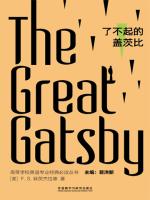The great Gastby
用户777714
Reading Notes on The Great Gatsby 1. The Illusion of the American
Dream F. Scott Fitzgerald’s The Great Gatsby dismantles the myth of
the American Dream through the lens of Jay Gatsby, a self-made man who
amasses wealth to reclaim his lost love, Daisy Buchanan. Set in the
1920s “Jazz Age,” the novel portrays an era of decadence and moral
decay, where materialism overrides authenticity. Gatsby’s opulent
parties, symbolized by “unfamiliar mouths” and “drifting couples”
(Fitzgerald 41), serve as a facade for his desperate yearning to
transcend his humble origins. His pursuit of Daisy, a “golden girl”
(120), mirrors the broader societal chase for an idealized, unattainable
vision of success. The green light at the end of Daisy’s dock, a
recurring symbol, encapsulates this illusion. Gatsby “stretched out his
arms” towards it (21), yet the light remains eternally out of reach—just
as the Dream, corrupted by greed, eludes those who worship it.
Fitzgerald underscores this through the Valley of Ashes, a desolate
wasteland between West Egg and New York, where George Wilson’s garage
stands as a metaphor for crushed hopes. When Gatsby is shot, his death
reveals the Dream’s hollowness: “the holocaust was complete” (162), and
the world moves on, indifferent to his demise. 2. Class and Morality
in the Roaring Twenties The novel starkly contrasts the old money of
East Egg (represented by Tom and Daisy Buchanan) with the new wealth of
West Egg (Gatsby). Tom, a racist and philanderer, embodies the moral
bankruptcy of inherited privilege, while Gatsby, though honest in his
aspirations, resorts to bootlegging to achieve social status. This
dichotomy is highlighted in the Buchanans’ casual cruelty—they flee
after Myrtle Wilson’s death, leaving Gatsby to bear the blame. As Nick
Carraway notes, they are “careless people” who “smashed up things and
creatures and then retreated back into their money” (179). Fitzgerald
uses symbolism to critique class divisions. Gatsby’s mansion, a
“colossal affair” (9), is a vulgar imitation of European aristocracy,
exposing the emptiness of new money’s attempt to buy culture. In
contrast, the Buchanans’ home exudes effortless elegance, yet harbors
marital infidelity and moral decay. The divide is further emphasized by
the “two worlds” Nick observes: the Buchanans’ casual luxury and
Gatsby’s desperate striving, both ultimately corrupt in different ways.
3. The Role of Memory and Time Gatsby’s obsession with the past drives
his every action. He tells Nick, “I can repeat the past” (110), a
delusion that fuels his reinvention. His library, filled with unread
books, symbolizes his superficial attempt to construct an identity.
Daisy’s voice, which Gatsby claims is “full of money” (120), becomes a
siren call to a bygone era when he loved her before the war.
Fitzgerald employs time as a destructive force. The clock on Gatsby’s
mantel, which Nick catches before it falls, represents the fragility of
Gatsby’s attempt to freeze time. When Daisy fails to choose him over
Tom, Gatsby’s illusion shatters: “his dream must have seemed so close
that he could hardly fail to grasp it” (180), but time has irreversibly
altered both Daisy and their relationship. The novel’s final lines,
comparing humanity to “boats against the current, borne back ceaselessly
into the past” (180), underscore the tragic futility of trying to
reclaim what is lost. 4. Narrative Perspective and Nick Carraway
Nick, the narrator, positions himself as “one of the few honest people
that I have ever known” (59), but his reliability is nuanced. He admires
Gatsby’s “extraordinary gift for hope” (2), yet criticizes the moral
decay around him. His neutrality wavers as he becomes increasingly
involved in the Buchanans’ drama, eventually realizing that East Egg’s
“atrocious din” (17) reflects a society rotten to its core. Nick’s
journey from observer to participant highlights the novel’s theme of
complicity. By the end, he rejects the East’s decadence and returns to
the Midwest, but not before acknowledging that Gatsby’s dream “was
already behind him” (180). His narrative serves as both an elegy for
Gatsby and a critique of a society that values appearance over
substance. 5. Legacy and Literary Significance The Great Gatsby
endures as a cautionary tale about the perils of idealization. Gatsby’s
tragedy lies not in his failure to win Daisy, but in his belief that
material wealth could resurrect the past. Fitzgerald’s prose, rich with
sensory imagery (e.g., the “thickly leaved” elms and “glowing”
cocktails), paints a vivid portrait of an era drunk on its own success.
The novel’s enduring relevance stems from its exploration of universal
themes: the tension between idealism and reality, the corrupting power
of money, and the human yearning to transcend one’s origins. As Gatsby’s
dream collapses, Fitzgerald reminds us that the American Dream, when
divorced from integrity, becomes a dangerous illusion—one that continues
to resonate in modern discussions of class, ambition, and the price of
success.



 京公网安备 11010802032529号
京公网安备 11010802032529号